Nicolas Papernot
Beyond Laplace and Gaussian: Exploring the Generalized Gaussian Mechanism for Private Machine Learning
Jun 14, 2025Abstract:Differential privacy (DP) is obtained by randomizing a data analysis algorithm, which necessarily introduces a tradeoff between its utility and privacy. Many DP mechanisms are built upon one of two underlying tools: Laplace and Gaussian additive noise mechanisms. We expand the search space of algorithms by investigating the Generalized Gaussian mechanism, which samples the additive noise term $x$ with probability proportional to $e^{-\frac{| x |}{\sigma}^{\beta} }$ for some $\beta \geq 1$. The Laplace and Gaussian mechanisms are special cases of GG for $\beta=1$ and $\beta=2$, respectively. In this work, we prove that all members of the GG family satisfy differential privacy, and provide an extension of an existing numerical accountant (the PRV accountant) for these mechanisms. We show that privacy accounting for the GG Mechanism and its variants is dimension independent, which substantially improves computational costs of privacy accounting. We apply the GG mechanism to two canonical tools for private machine learning, PATE and DP-SGD; we show empirically that $\beta$ has a weak relationship with test-accuracy, and that generally $\beta=2$ (Gaussian) is nearly optimal. This provides justification for the widespread adoption of the Gaussian mechanism in DP learning, and can be interpreted as a negative result, that optimizing over $\beta$ does not lead to meaningful improvements in performance.
Confidential Guardian: Cryptographically Prohibiting the Abuse of Model Abstention
May 29, 2025Abstract:Cautious predictions -- where a machine learning model abstains when uncertain -- are crucial for limiting harmful errors in safety-critical applications. In this work, we identify a novel threat: a dishonest institution can exploit these mechanisms to discriminate or unjustly deny services under the guise of uncertainty. We demonstrate the practicality of this threat by introducing an uncertainty-inducing attack called Mirage, which deliberately reduces confidence in targeted input regions, thereby covertly disadvantaging specific individuals. At the same time, Mirage maintains high predictive performance across all data points. To counter this threat, we propose Confidential Guardian, a framework that analyzes calibration metrics on a reference dataset to detect artificially suppressed confidence. Additionally, it employs zero-knowledge proofs of verified inference to ensure that reported confidence scores genuinely originate from the deployed model. This prevents the provider from fabricating arbitrary model confidence values while protecting the model's proprietary details. Our results confirm that Confidential Guardian effectively prevents the misuse of cautious predictions, providing verifiable assurances that abstention reflects genuine model uncertainty rather than malicious intent.
Suitability Filter: A Statistical Framework for Classifier Evaluation in Real-World Deployment Settings
May 28, 2025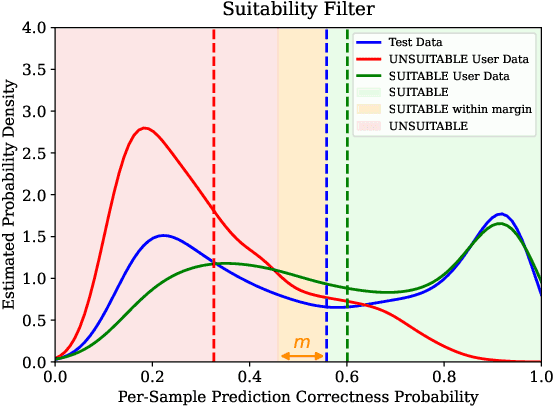

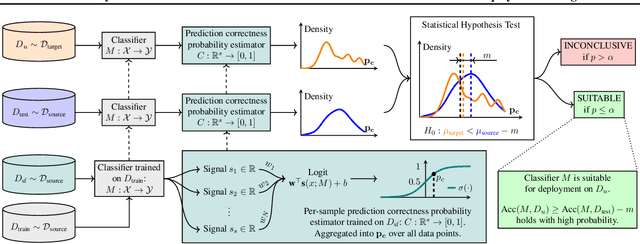
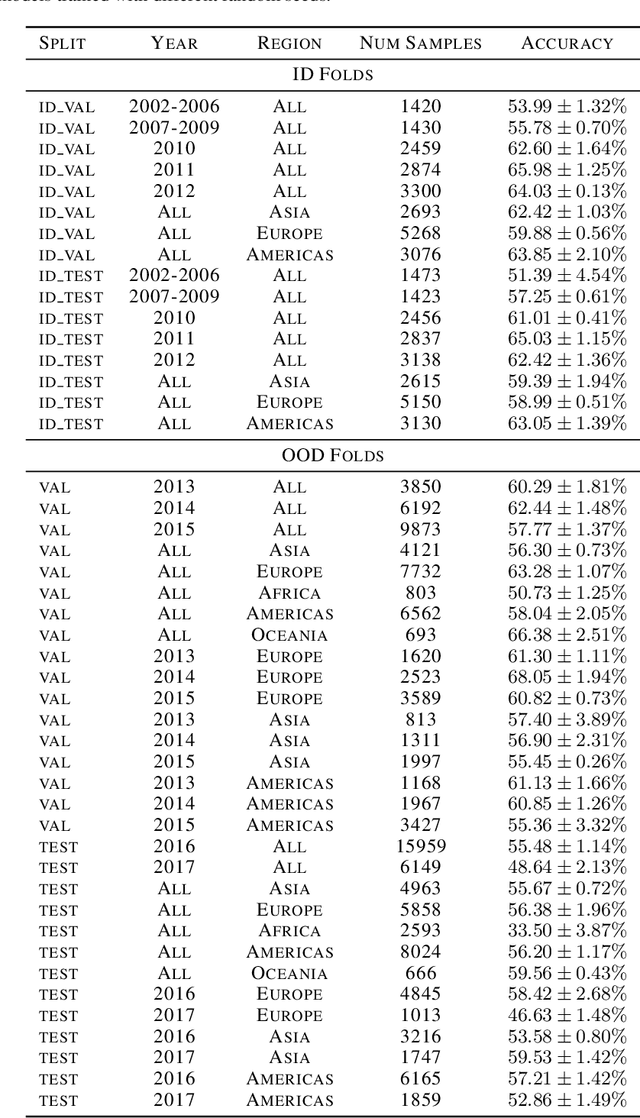
Abstract:Deploying machine learning models in safety-critical domains poses a key challenge: ensuring reliable model performance on downstream user data without access to ground truth labels for direct validation. We propose the suitability filter, a novel framework designed to detect performance deterioration by utilizing suitability signals -- model output features that are sensitive to covariate shifts and indicative of potential prediction errors. The suitability filter evaluates whether classifier accuracy on unlabeled user data shows significant degradation compared to the accuracy measured on the labeled test dataset. Specifically, it ensures that this degradation does not exceed a pre-specified margin, which represents the maximum acceptable drop in accuracy. To achieve reliable performance evaluation, we aggregate suitability signals for both test and user data and compare these empirical distributions using statistical hypothesis testing, thus providing insights into decision uncertainty. Our modular method adapts to various models and domains. Empirical evaluations across different classification tasks demonstrate that the suitability filter reliably detects performance deviations due to covariate shift. This enables proactive mitigation of potential failures in high-stakes applications.
Private Rate-Constrained Optimization with Applications to Fair Learning
May 28, 2025Abstract:Many problems in trustworthy ML can be formulated as minimization of the model error under constraints on the prediction rates of the model for suitably-chosen marginals, including most group fairness constraints (demographic parity, equality of odds, etc.). In this work, we study such constrained minimization problems under differential privacy (DP). Standard DP optimization techniques like DP-SGD rely on the loss function's decomposability into per-sample contributions. However, rate constraints introduce inter-sample dependencies, violating the decomposability requirement. To address this, we develop RaCO-DP, a DP variant of the Stochastic Gradient Descent-Ascent (SGDA) algorithm which solves the Lagrangian formulation of rate constraint problems. We demonstrate that the additional privacy cost of incorporating these constraints reduces to privately estimating a histogram over the mini-batch at each optimization step. We prove the convergence of our algorithm through a novel analysis of SGDA that leverages the linear structure of the dual parameter. Finally, empirical results on learning under group fairness constraints demonstrate that our method Pareto-dominates existing private learning approaches in fairness-utility trade-offs.
Leveraging Per-Instance Privacy for Machine Unlearning
May 24, 2025Abstract:We present a principled, per-instance approach to quantifying the difficulty of unlearning via fine-tuning. We begin by sharpening an analysis of noisy gradient descent for unlearning (Chien et al., 2024), obtaining a better utility-unlearning tradeoff by replacing worst-case privacy loss bounds with per-instance privacy losses (Thudi et al., 2024), each of which bounds the (Renyi) divergence to retraining without an individual data point. To demonstrate the practical applicability of our theory, we present empirical results showing that our theoretical predictions are born out both for Stochastic Gradient Langevin Dynamics (SGLD) as well as for standard fine-tuning without explicit noise. We further demonstrate that per-instance privacy losses correlate well with several existing data difficulty metrics, while also identifying harder groups of data points, and introduce novel evaluation methods based on loss barriers. All together, our findings provide a foundation for more efficient and adaptive unlearning strategies tailored to the unique properties of individual data points.
Pr$εε$mpt: Sanitizing Sensitive Prompts for LLMs
Apr 07, 2025Abstract:The rise of large language models (LLMs) has introduced new privacy challenges, particularly during inference where sensitive information in prompts may be exposed to proprietary LLM APIs. In this paper, we address the problem of formally protecting the sensitive information contained in a prompt while maintaining response quality. To this end, first, we introduce a cryptographically inspired notion of a prompt sanitizer which transforms an input prompt to protect its sensitive tokens. Second, we propose Pr$\epsilon\epsilon$mpt, a novel system that implements a prompt sanitizer. Pr$\epsilon\epsilon$mpt categorizes sensitive tokens into two types: (1) those where the LLM's response depends solely on the format (such as SSNs, credit card numbers), for which we use format-preserving encryption (FPE); and (2) those where the response depends on specific values, (such as age, salary) for which we apply metric differential privacy (mDP). Our evaluation demonstrates that Pr$\epsilon\epsilon$mpt is a practical method to achieve meaningful privacy guarantees, while maintaining high utility compared to unsanitized prompts, and outperforming prior methods
Backdoor Detection through Replicated Execution of Outsourced Training
Mar 31, 2025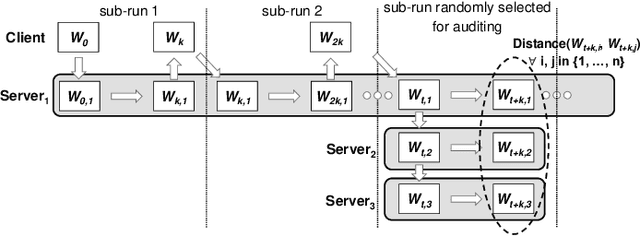
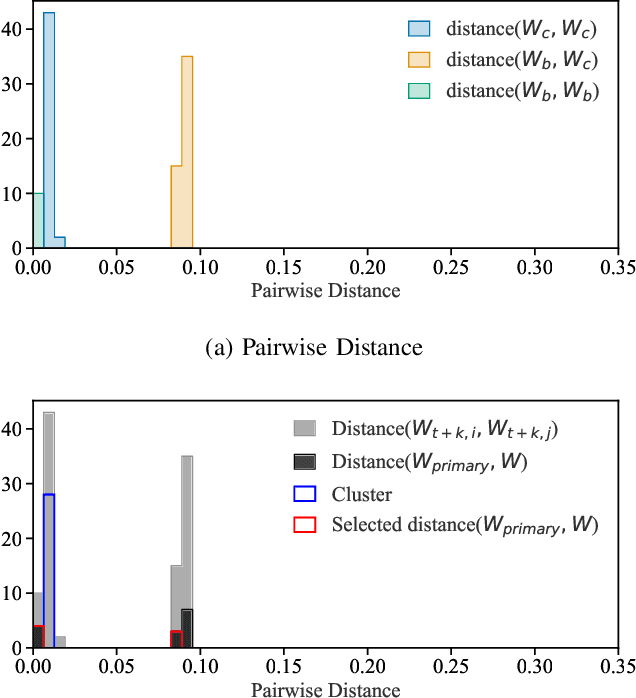
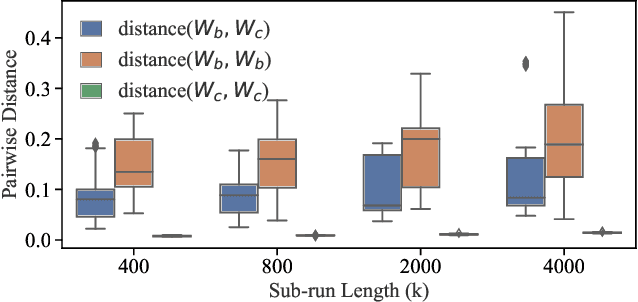
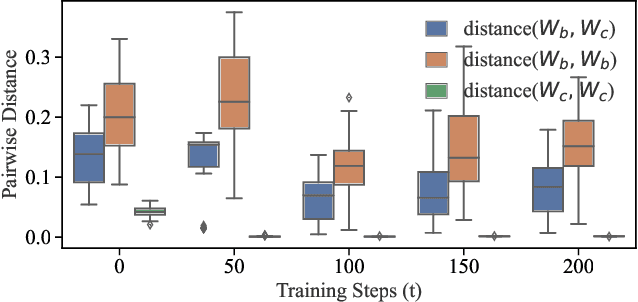
Abstract:It is common practice to outsource the training of machine learning models to cloud providers. Clients who do so gain from the cloud's economies of scale, but implicitly assume trust: the server should not deviate from the client's training procedure. A malicious server may, for instance, seek to insert backdoors in the model. Detecting a backdoored model without prior knowledge of both the backdoor attack and its accompanying trigger remains a challenging problem. In this paper, we show that a client with access to multiple cloud providers can replicate a subset of training steps across multiple servers to detect deviation from the training procedure in a similar manner to differential testing. Assuming some cloud-provided servers are benign, we identify malicious servers by the substantial difference between model updates required for backdooring and those resulting from clean training. Perhaps the strongest advantage of our approach is its suitability to clients that have limited-to-no local compute capability to perform training; we leverage the existence of multiple cloud providers to identify malicious updates without expensive human labeling or heavy computation. We demonstrate the capabilities of our approach on an outsourced supervised learning task where $50\%$ of the cloud providers insert their own backdoor; our approach is able to correctly identify $99.6\%$ of them. In essence, our approach is successful because it replaces the signature-based paradigm taken by existing approaches with an anomaly-based detection paradigm. Furthermore, our approach is robust to several attacks from adaptive adversaries utilizing knowledge of our detection scheme.
Machine Unlearning Doesn't Do What You Think: Lessons for Generative AI Policy, Research, and Practice
Dec 09, 2024



Abstract:We articulate fundamental mismatches between technical methods for machine unlearning in Generative AI, and documented aspirations for broader impact that these methods could have for law and policy. These aspirations are both numerous and varied, motivated by issues that pertain to privacy, copyright, safety, and more. For example, unlearning is often invoked as a solution for removing the effects of targeted information from a generative-AI model's parameters, e.g., a particular individual's personal data or in-copyright expression of Spiderman that was included in the model's training data. Unlearning is also proposed as a way to prevent a model from generating targeted types of information in its outputs, e.g., generations that closely resemble a particular individual's data or reflect the concept of "Spiderman." Both of these goals--the targeted removal of information from a model and the targeted suppression of information from a model's outputs--present various technical and substantive challenges. We provide a framework for thinking rigorously about these challenges, which enables us to be clear about why unlearning is not a general-purpose solution for circumscribing generative-AI model behavior in service of broader positive impact. We aim for conceptual clarity and to encourage more thoughtful communication among machine learning (ML), law, and policy experts who seek to develop and apply technical methods for compliance with policy objectives.
On the Privacy Risk of In-context Learning
Nov 15, 2024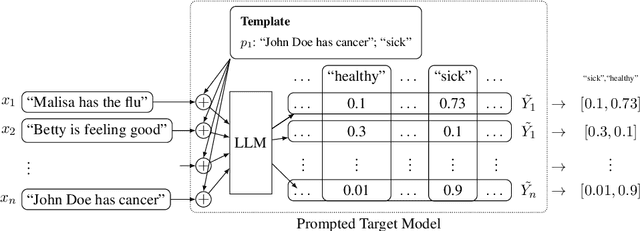
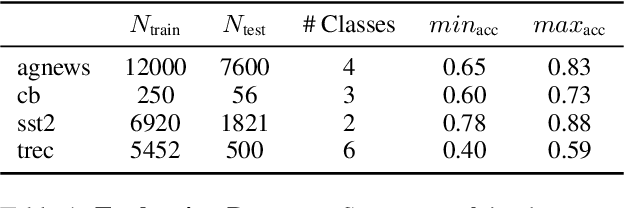
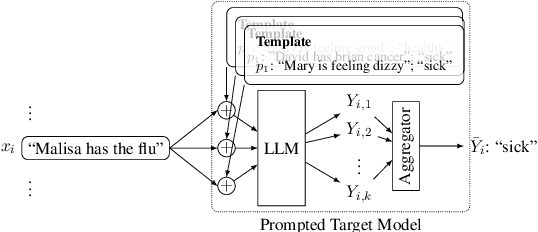

Abstract:Large language models (LLMs) are excellent few-shot learners. They can perform a wide variety of tasks purely based on natural language prompts provided to them. These prompts contain data of a specific downstream task -- often the private dataset of a party, e.g., a company that wants to leverage the LLM for their purposes. We show that deploying prompted models presents a significant privacy risk for the data used within the prompt by instantiating a highly effective membership inference attack. We also observe that the privacy risk of prompted models exceeds fine-tuned models at the same utility levels. After identifying the model's sensitivity to their prompts -- in the form of a significantly higher prediction confidence on the prompted data -- as a cause for the increased risk, we propose ensembling as a mitigation strategy. By aggregating over multiple different versions of a prompted model, membership inference risk can be decreased.
Temporal-Difference Learning Using Distributed Error Signals
Nov 06, 2024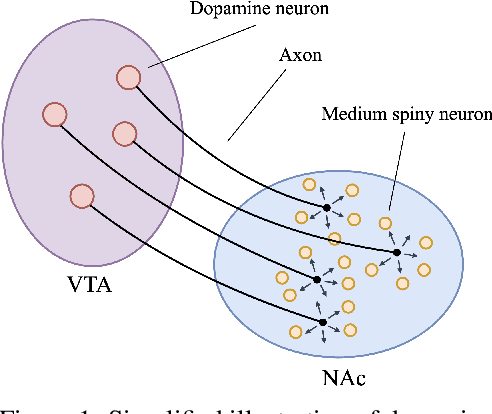
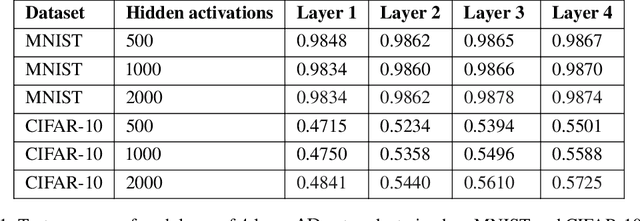
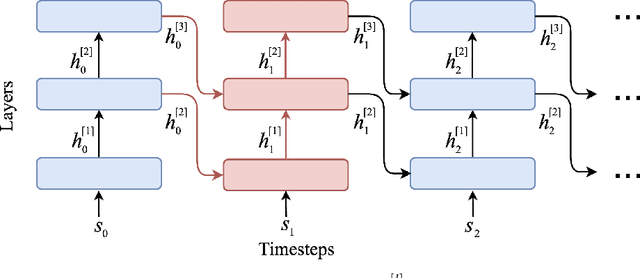

Abstract:A computational problem in biological reward-based learning is how credit assignment is performed in the nucleus accumbens (NAc). Much research suggests that NAc dopamine encodes temporal-difference (TD) errors for learning value predictions. However, dopamine is synchronously distributed in regionally homogeneous concentrations, which does not support explicit credit assignment (like used by backpropagation). It is unclear whether distributed errors alone are sufficient for synapses to make coordinated updates to learn complex, nonlinear reward-based learning tasks. We design a new deep Q-learning algorithm, Artificial Dopamine, to computationally demonstrate that synchronously distributed, per-layer TD errors may be sufficient to learn surprisingly complex RL tasks. We empirically evaluate our algorithm on MinAtar, the DeepMind Control Suite, and classic control tasks, and show it often achieves comparable performance to deep RL algorithms that use backpropagation.
 Add to Chrome
Add to Chrome Add to Firefox
Add to Firefox Add to Edge
Add to Edge